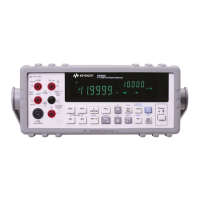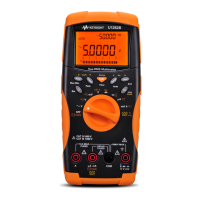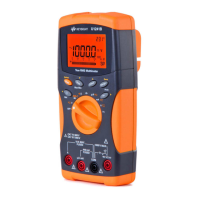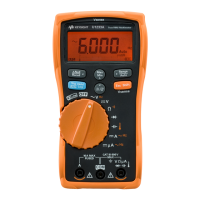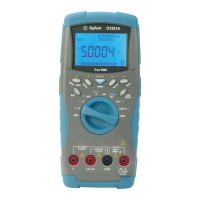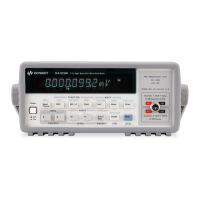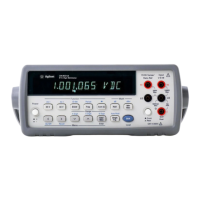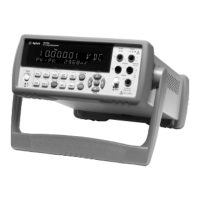Verification and Performance Tests 5
Performance Verification Tests
U3606A User’s and Service Guide 161
6 Configure the oscilloscope as follows:
i Set the time/div range to 5 ms/div.
ii Set the oscilloscope to acquire every single sample at the maximum
sampling rate but retain only the minimum and maximum values in a
sampling region.
iii Set a 20 MHz cut- off frequency for better high frequency cut- off.
iv Enable AC coupling.
v Enable auto- triggering.
7 Allow the oscilloscope to run for a few seconds to generate enough
measurement points.
8 Obtain the maximum peak- to- peak voltage measurement as indicated in
the oscilloscope. Divide the value by 10 to get the constant voltage
peak- to- peak noise measurement. The result should not exceed
0.03 V
pp
.
9 Disconnect the oscilloscope and connect an RMS voltmeter in its place
(see Figure 5- 7 on page 144). Do not disconnect the 50 Ω feed- thru
termination.
10 Configure the RMS voltmeter as follows:
i Set the high pass filter to 10 Hz.
ii Enable AC coupling.
11 Obtain the maximum rms voltage measurement as indicated in the RMS
voltmeter. Divide the value by 10 to get the constant voltage rms noise
measurement. The result should not exceed 0.002 V
rms
.
Load transient response time
This test measures the time for the output voltage to recover to within
15 mV of nominal output voltage following a load change from full load to
half load or vice versa.
1 Turn off the instrument and connect an oscilloscope between the front
panel (red) and (black) output terminals (see Figure 5- 8 on
page 145).
2 Turn on the instrument. Press Voltage to select the constant voltage
mode. Ensure that the S1 (30 V/1 A) range is selected (the S1
annunciator is illuminated). Press Shift > Range again if it is not.
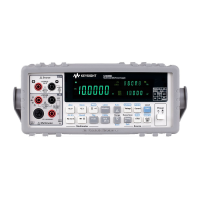
